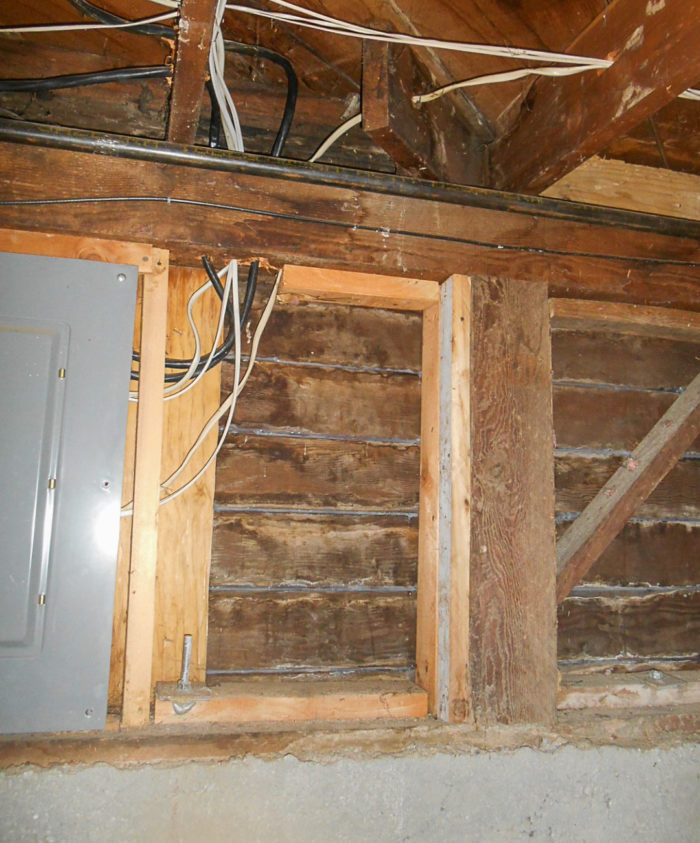
Image Credit: Irene3
Irene lives in a 1901 house in the Pacific Northwest with an unfinished basement that’s slowly been improved but is still unheated. In previous remodeling, Irene removed fiberglass insulation that had been installed on the upper sections of the basement walls and improved drainage to solve a water infiltration problem.
Now, the object is to air seal the basement, but Irene has been thrown a curve by an HVAC contractor, as she explains in a post in the Q&A forum.
“I realize the basement is considered part of the conditioned space, but I was a little startled at an HVAC guy proposing to cut heat runs into the basement (which we do not plan ever to finish)…,” she says. “We are just getting around to properly air sealing it. I am embarrassed it took us so long, but natural gas prices have been low enough that I hadn’t worried about the bills and didn’t realize our usage was as high as it was. (The furnace is on its way out as well).”
Irene had always assumed a basement should be “cellar temperature of thereabouts” — that is, not too warm, not too cold.
“It’s been convenient for us to keep beer down there, for instance,” she writes. “Plus I don’t want to overwork the heating system by adding square footage to the officially heated area. But is it inefficient to have the basement much cooler than the rest of the house?”
In addition to the heating question, Irene also wonders how to finish a framed and sided section of the basement that’s beneath a porch (see the photo above). “Some of it doesn’t even have siding,” she writes, “At that point the wall of the house is one board thick … Should something be…
Weekly Newsletter
Get building science and energy efficiency advice, plus special offers, in your inbox.

This article is only available to GBA Prime Members
Sign up for a free trial and get instant access to this article as well as GBA’s complete library of premium articles and construction details.
Start Free TrialAlready a member? Log in





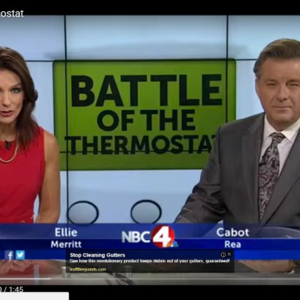
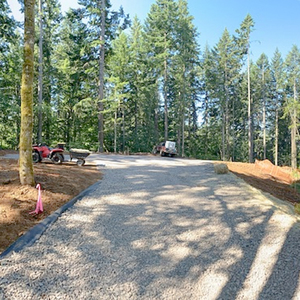
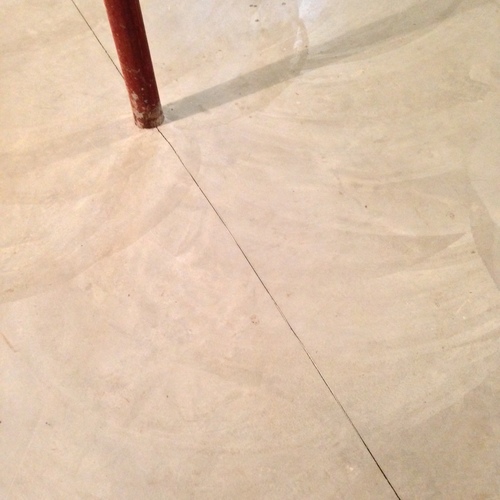
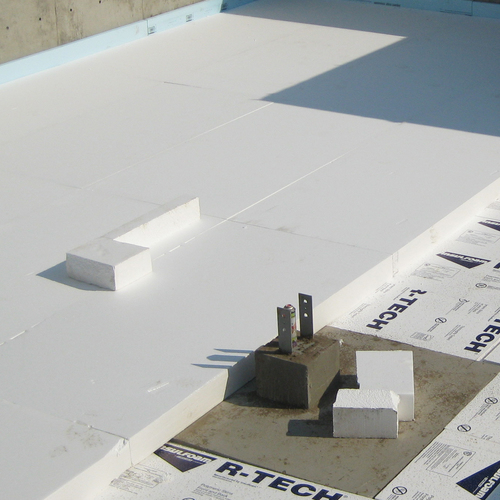






13 Comments
Dehumidifiers and cooler ambient temps
When I bought a run-of-the-mill Energy Star 30-pint dehumidifier last year for about $200, I was pleased to see that it was rated down to about 40 deg F. For a basement that's beer-storage cool, there shouldn't be a problem with coil icing if you check the specs when buying.
Dehumidifiers not needed in PNW basements @ Jeremy (&Peter Yost)
Most folks on the eastern half of the country don't fully get just how dry the outdoor air in the zone 4C parts of Pacific Northwest is, rain notwithstanding. The outdoor dew point averages are even below the deep subsoil temperatures, and even further below the temperatures found in a typical uninsulated basement.
Unless there is chronic bulk water leakage or the water table is only an inch below the slab most basements in the Pacific northwest don't get moldy or develop the "musty basement" smell. Even a modest amount of ventilation from outdoor air or fully conditioned air will usually take care of those basements that do run higher than typical humidity.
Even during the most-humid months (in absolute terms, not relative humidity) the outdoor dew point average are below 55F, (which is approximately the deep subsoil temperature in the region). Most of the year the outdoor dew points are 40F or cooler, and even the coldest unvented basements don't average much below 50F in winter, or much below 60F in summer.
https://weatherspark.com/m/924/8/Average-Weather-in-August-in-Tacoma-Washington-United-States#Sections-Humidity
You write "In previous
You write "In previous remodeling, Irene removed fiberglass insulation that had been installed between the floor joists above the basement" -- that sounds as if you mean on the ceiling of the basement, rather than the upper part of the walls, unless I'm misunderstanding you. Anyway, just to clarify this very minor point, it was on the walls, and I am pretty sure it had been taken out before we moved in (there were a lot of bits of pink fluff in staples left behind to show where it had been). Also, in regard to "If upgrading the HVAC means pulling a furnace from the unfinished basement, then the incidental heat loss from this unit and ducts in the unfinished basement is gone", the heat pump we're putting in will have an air handler in the position of the current furnace, using the existing ductwork, so some incidental heat loss will still be occurring. If anything, given the air sealing and insulation work, I would expect the basement to be warmer next winter. Dana is quite right about PNW air being dryer than one would expect.
I have a plan for the beer cellar, by the way. Before our remodel we had a door outside, on the back yard side of the house, that led to a flight of steps down to the basement, with another door at the bottom. We expanded beyond that outside door, which is no longer there, but the basement door and set of concrete steps are still there, now leading to a blank wall. I expect that space to stay cooler than the rest of the basement, and it looks ideal for displaying my husband's beer collection (thus giving us back some floor space in the main part of the basement).
I forgot to say that I very
I forgot to say that I very much appreciate the interest my questions have generated, and am pleased and surprised to have provided a spotlight thread. Also, that's really interesting that code requirements might have been affected if we had gone ahead with cutting in another heat run to the basement.
Dehumidifiers: need vs. specs
Dana, I wasn't suggesting that a dehumidifier was needed. Rather, I was just pointing out that commonly-available models are now suitable for cooler ambient temps, a change from the past.
I have lived in the mountain west (CZ7) and miss that naturally bone-dry basement...
Response to Irene3 (Comment #3)
Irene,
Thanks for your comments. I have edited the sentence about the fiberglass batts that were removed to more accurately reflect the facts. We appreciate the correction.
Another thing I've been
Another thing I've been wondering about is what thermostat setup would be best. (I have a query in to the installer, who recommends Kumo, but am interested in various opinions.)
Response to Irene3 (Comment #7)
Irene,
What do you mean by a "thermostat setup"?
And what heating appliance did you decide to install?
If you tell us what heating appliance you're talking about, we might be able to decipher your question about your "thermostat setup."
My guesses are that you want information about either (a) the brand of thermostat to buy, or (b) the best location to install your thermostat, or (c) thermostat control settings.
But unless you tell us more, it's hard to help you.
Kumo is a Mitsubishi trademark @ Martin
The "Kumo Cloud" is an application where Mitsubishi's wi-fi cassettes & wi-fi thermostats (including third party wi-fi thermostats) can be controlled remotely by digital devices. See:
http://www.mitsubishicomfort.com/kumocloud#video
That may be valuable to some people- not sure if it really matters here.
As stated in the previous
As stated in the previous thread, Mitsubishi PVA-A30AA7/PUZ-A30NHA7 (ducted, so no zones to worry about). I can't seem to find out what the choices are for thermostats for such a system, and I would prefer not to have a wireless one if it's not necessary. Especially given that all the advice about heat pumps says "set and forget" the thermostat as much as possible, I don't see why I would need to do anything terrifically complex, but I'm pretty sure the regular programmable one we have is not compatible with any heat pump system and would need to be replaced.
The heat pump is in. We ended
The heat pump is in. We ended up with an MRCH1 thermostat (made by Honeywell specifically for Mitsubishi).
Interesting! The PVA-A30AA7
Interesting! The PVA-A30AA7 is getting installed on my new build this week, but mine will have three zones. They're using the AirZone system, and each floor will be it's own zone.
Re pulling a furnace from an unfishished basement, and the loss of incidental heat - I'm thinking of removing my oil boiler in my Nova Scotia house. I'm concerned about losing the incidental heat because I also have a heat pump hot water tank down there. The basement is spray-foamed now. Any suggestions to supplement the heat in the unfinished basement, after the incidental heat source is lost?
Thanks.
Log in or become a member to post a comment.
Sign up Log in